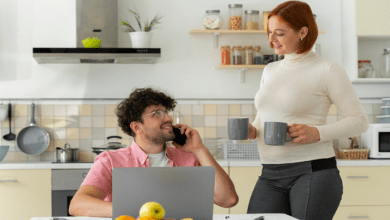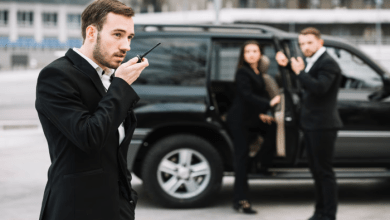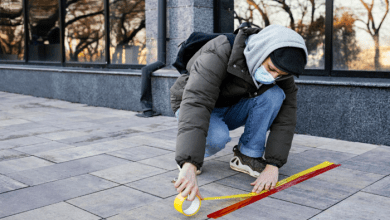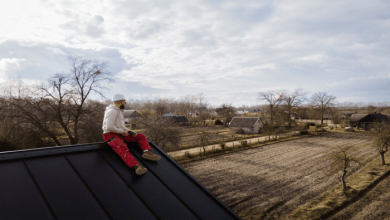
If you’ve ever walked through a buzzing expo hall or wandered a packed trade show floor, you know one truth: it’s incredibly easy to get overlooked. Amid the flashing lights, free samples, and high-energy pitches, most booths blend into a blur. And yet—some brands manage to linger in your mind long after the event ends. What’s their secret? It’s not just about big budgets or flashy tech. It comes down to smart, intentional design. But before we get into design decisions, let’s clarify publicity definition: by publicity we mean the degree and quality of exposure a brand earns in a given environment — how visible it is, how memorable its presence, how much buzz it creates among attendees and passers-by. That sets the baseline for everything else.
The first few seconds someone spends with your brand can determine whether they engage or walk right past. That’s why the decisions you make before the event even starts—your design choices, your messaging, your vibe—are everything. In this blog, we’re going to unpack how specific, brand-aligned design decisions can elevate your presence and leave a lasting impression.
Your Brand, Their Experience – Why Visual Identity is Everything
Imagine someone seeing your booth for the first time. They don’t know your company. They don’t care what you’re selling. In that moment, your visuals do all the talking. This is where your brand identity steps in—not just your logo, but your color palette, typefaces, messaging tone, and overall aesthetic. It’s like setting the stage for a story your visitors didn’t even know they were about to experience.
Consistency is key. When your signage, handouts, display walls, and even staff attire all reflect a cohesive style, it tells attendees that your brand is polished, professional, and deliberate. It creates trust without saying a word. But go beyond the basics—think about how shape, layout, and scale play a role too. Rounded corners vs. sharp edges, open spaces vs. tight setups, minimalism vs. maximalism—they all say something emotionally about your brand, whether you realize it or not.
Color is one of your most powerful tools. Warm tones can feel inviting, blues can signal calm expertise, while bold contrasts can shout energy and innovation. The key is to align those choices with your actual brand values, not just what looks trendy. A wellness brand using neon pink and black might turn heads, but it also sends a confusing message.
And don’t forget who you’re designing for. Think about the type of people attending the event. Are they corporate decision-makers? Creative freelancers? College students? Tailoring your visuals to match their expectations (while still staying true to your brand) is how you strike the right balance between standing out and fitting in.
Your visual identity doesn’t just decorate your booth—it defines the experience people have with your brand. Get that part right, and you’re already several steps ahead of the competition.
Standout Presence Through Strategic Display Choices
Having a visually aligned brand is a solid start, but to really capture attention at an event, your display choices need to be strategic. It’s not just about what looks good—it’s about what communicates, draws people in, and gives them a reason to stay.
Think of your event booth like a mini stage. Every element should support the story you’re telling. From modular backdrops to custom lighting and floor placement, these decisions affect how people flow through your space and what they take away from it. A cluttered layout, for example, may overwhelm attendees, while a well-placed focal point can guide them exactly where you want them to go.
And while it’s tempting to go for the flashiest setup, it pays to design with intention. Ask yourself: Does this booth reflect what my brand stands for? Will it make sense to my audience? A high-tech interactive wall might be impressive, but it needs to serve a purpose beyond aesthetics—whether that’s inviting interaction, encouraging conversation, or supporting a product demo.
That’s where the value of exhibition display solutions tailored to your brand becomes clear. Working with providers who understand your industry and your identity can help you avoid generic setups that blend in with everyone else’s. Especially for local events, tapping into regional vendors who know the venue and crowd can make a surprisingly big difference. They can offer insight on what actually works in that space—because they’ve seen what doesn’t.
The most successful event spaces are the ones that create an emotional checkpoint in someone’s day. When someone pauses in front of your booth, their brain is making split-second decisions. Strategic display choices guide those moments so you’re remembered—not just noticed.
Interactive and Immersive Touchpoints That Work
Let’s face it—event attendees are bombarded with visuals all day. What breaks through the noise? Experience. When you invite someone to not just look, but touch, move, explore, or participate, you instantly become more memorable.
Physical interaction taps into deeper parts of the brain. Whether it’s a hands-on product demo, a tactile wall, or a mini-workshop, immersive touchpoints build trust and familiarity. Even something as simple as letting attendees assemble a sample or scan a code to unlock a quiz makes your booth feel less like an ad, and more like an experience.
And don’t underestimate the power of multi-sensory design. Lighting that subtly shifts with the mood, soft background music that matches your brand energy, or even scent-based branding (yes, really) can anchor memories. Ever walked past a store just because it smelled amazing? That’s scent marketing doing its thing.
Now, tech can definitely enhance these interactions—when used with care. QR codes, AR product previews, or even a simple social photo booth can drive engagement, but they should never feel gimmicky or out of place. The tech should always support your brand’s message, not compete with it.
The key is balance. You don’t want your space to feel like a carnival unless your brand is a carnival. Use interactive elements to bring your brand’s story to life—then let your visitors carry that story with them long after the event wraps up.
People Remember Feelings – Not Just Logos
You can have the cleanest logo, the most eye-catching banner, and the sleekest booth furniture—but if someone walks away from your space feeling nothing, you’ve missed the mark. Emotional connection is what turns fleeting interactions into brand loyalty.
At events, you have a rare opportunity to create a mood that matches your brand values. That starts with tone—how your team speaks, greets, and interacts. Are you warm and casual? Sleek and professional? Playful and unexpected? Your tone should feel intentional, from the first handshake to the last conversation.
Even small sensory details can shift perception. The scent of fresh coffee, the texture of your materials, the energy of your staff—these things linger in the memory. They’re subtle cues that tell people what your brand feels like, and feelings are far more memorable than facts.
Your booth should also have a flow—a beginning, middle, and end—just like a great story. Maybe it starts with a visual hook that stops people in their tracks. Then there’s a moment of discovery or interaction that pulls them deeper. And finally, a clear takeaway or offer that stays with them after they leave. That storytelling arc doesn’t require expensive tricks—just a thoughtful, people-first approach.
When you focus on how your space makes people feel, you stop just being another booth—and start becoming a brand they remember.
Conclusion
Creating a truly unforgettable event presence isn’t about going bigger or louder than everyone else. It’s about being more you. Every design decision, from your visual identity to your interactive elements, should reinforce what your brand stands for and how you want people to experience it.
By leaning into intentional design, thoughtful layouts, and emotionally resonant moments, you’re doing more than filling space—you’re building a memory. One that your visitors will carry with them long after the event banners come down.
So the next time you start planning your event presence, start with your brand’s heart. Design from there, and the results won’t just look good—they’ll be unforgettable.




